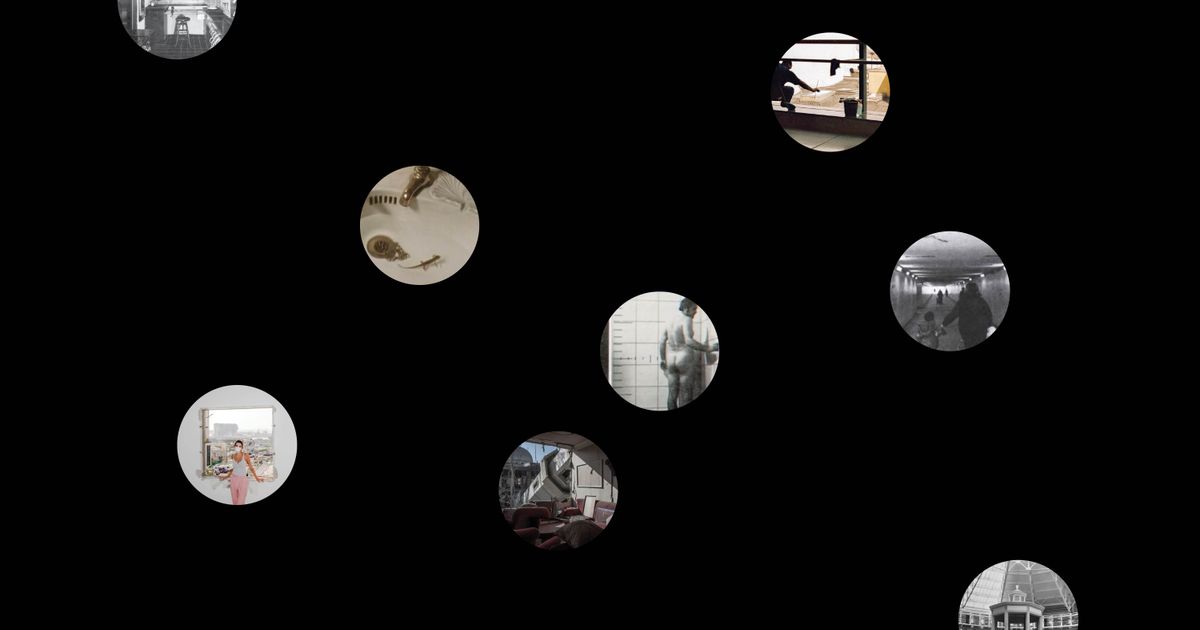The Department of Interior Architecture at HEAD–Genève explores the role of interior spaces in shaping contemporaneity. To that extent, it organizes a series of reflections and interventions that aim to learn, question and visibilize how interiors play a key role in the construction of violence for inhabiting bodies and subjectivities.
Format of presentations: Free format (lectures, papers, films, installations, performances, etc.) / Location: HEAD – Genève campus / Deadline for proposals: October 20, 2025 / Proposal: one PDF containing an abstract (maximum 500 words), a short bio (maximum 300 words), and a visual reference image / Dates of the symposium: February 23 & 24, 2026 / Travel/honorarium: At the expense of the selected contributors.
Contact: Please send your proposal to Javier F. Contreras, Paule Perron and Valentina De Luigi via their institutional email addresses: javier.fernandez-contreras@hesge.ch; paule.perron@hesge.ch; valentina.deluigi@hesge.ch.
Theme
To address spatial violence from within a school of interior architecture is to acknowledge interior spaces as more than politically neutral backgrounds. They should be understood not as mere decors for the everyday lives of predefined identities, but as materially situated conditions that actively participate in shaping social and political interactions. Addressing Interior Violences follows Michel Foucault’s reflections in Discipline and Punish (1975) by considering interior architecture as a set of biopolitical techniques of control over bodies and subjectivities–techniques that uphold the construction of the normal subject: that is, the considered-able, white, young, human, bourgeois, heterosexual, male subject. At the same time, it also questions its mirror image: the spatial production of the monstrous, excluded, dehumanized one. Building on the writings of Lennard J. Davis (2002), this open call seeks to interrogate the role of interior spaces in perpetuating power structures organized around the modern notion of normalcy. Divided into three categories, it welcomes proposals that have the following collective aims:
Learn the ways in which the discipline of interior architecture has historically participated in the exclusion of minoritized bodies–both human and non-human.
Question how contemporary interior material conditions can contribute to the perpetuation of power dynamics over certain bodies in specific contemporary contexts–and, conversely, how they might serve as tools of negotiation and resistance.
Visibilize practices and projects that have developed methodologies aimed at overcoming these violences.
Learning Histories of Violence
This first perspective traces the contested histories of bodily and spatial norms. Drawing on the writings of Jos Boys (2017), it questions how normalcy, with its associated ideals of body and environment, is deeply tied to specific temporal, territorial and political contexts, and translated into standardized design practices. It also argues that minor narratives–emerging from non-dominant perspectives–are urgently needed to uncover the power structures embedded in interior spaces, as well as their impact on diverse bodies and territories. Within this section, HEAD–Genève welcomes proposals that adopt a critical stance toward dominant narratives of interior architecture and examine the inherent violence conveyed by the notion of normalcy.
Questioning Weaponized Interiors
This second perspective addresses interior architecture as a contemporary practice of boundary-making that can be understood as weaponized. Such boundaries–whether physical, atmospheric or visual– regulate the distribution of bodies in space, determining who and what can gain access to particular environments. As Elsa Dorlin (2017) argues, the capacity to resist order–in this case, to construct, negotiate with or dismantle these limits–is unevenly distributed. This perspective invites inquiry into how contemporary spatial conditions function as technologies of regulation that both produce and sustain power structures. It simultaneously addresses such partitioning as a necessary mechanism for sustaining social life and rituals within the built environment. HEAD–Genève therefore welcomes proposals that explore how these technologies can be disrupted, subverted or renegotiated.
Visibilizing Dissident Practices and Projects Involving Interiors
This perspective, which builds on the work of Starhawk (2021), invites proposals showcasing practices that have developed methods for translating critical thought into spatial interventions and collective organization. It suggests that questioning the normal boundaries of Western interiors through the collectivization of practices and spaces could open up possibilities for a caring environment. Under this section, HEAD – Genève welcomes completed, speculative or experimental projects that address power, boundaries and exclusion in interior architecture. Submissions may highlight emancipatory or subversive practices that challenge dominant norms and reconfigure spaces to support diverse bodies–human and non-human–as well as communities and alternatives modes of inhabiting.
Toward Emancipatory Futures
In light of today’s geopolitical context, marked by pervasive international violence against specific bodies and subjectivities, Addressing Interior Violences stresses the urgent responsibility of interior architecture to pursue the work of many to acknowledge and deconstruct its own complicities. Engaging with postcolonial, feminist, queer and ecological perspectives seems essential, not only to understand these histories, but also to reorient the discipline toward more just and emancipatory futures. We recognize that voices marginalized by structures of gender, sexuality, race, class or ability have historically been excluded from the discipline. This call therefore explicitly encourages submissions from those positions, which are considered central to the discussion.
*Image above: Unknown. Prison inspired by Bentham’s Panopticon [photograph]. Getty Images. Kira, A. (1960). Bathroom [photograph]. Millen, L. (unknown). Anne Thorne with son. From MATRIX (Collective) (1984). Making Space: Women and the Man-Made Environment [photograph]. London: Pluto Press. (Republished 2021, London: Verso). Greenaway, P. (1985). Inside Rooms: 26 Bathrooms, London & Oxfordshire [screenshots from film]. United Kingdom: Channel 4. Miguel, C. (2019). Everyday Maintenance series [photograph]. Schütte-Lihotzky, M. (1926). Frankfurter Küche [archive photograph]. Frankfurt am Main: Museum Angewandte Kunst. Boulos, M. (2020). Nour [photograph]. For Time Magazine. Weiken, O. (July 30, 2014). Gaza Strip [photograph].





